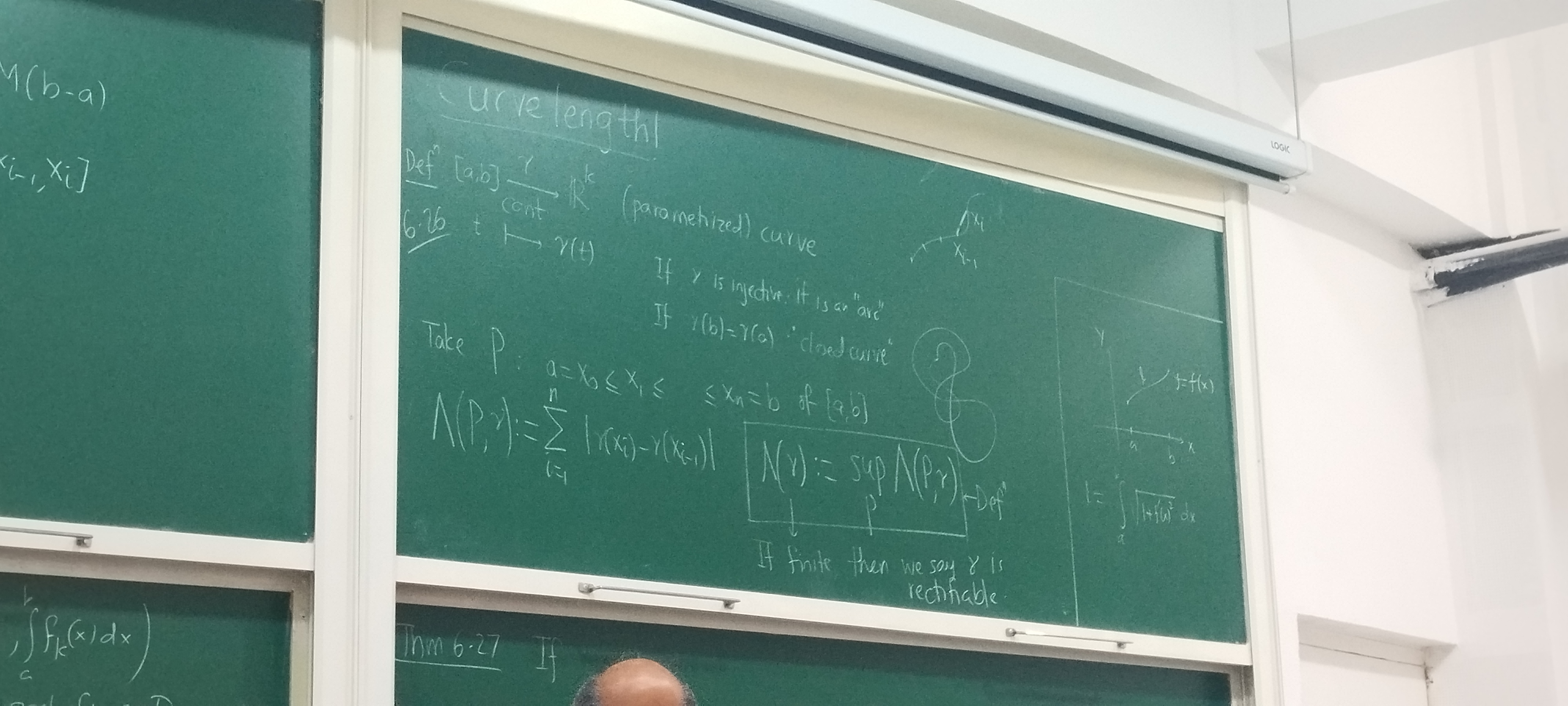
Integration of vector valued functions
Rudin, 6.23
Definition 1.
Let . Let defined by .
We say if for all . If this is the case, we define
Similar definition exists for the Stieltjes integral. Note that parts a, c and e of the properties of integrals are valid for these integrals, and so is the fundamental theorem of calculus:
Rudin, 6.24
Theorem 2.
Let . If on and if there is a differentiable function such that , then
Analogue of 6.13b
Rudin, 6.25
Theorem 3.
Let . If , then
Proof
. By definition, each . It follows that is integrable for each , since is continuous (alternatively, the product of two integrable functions is integrable). Also, note that is bijective and continuous on . Thus, is continuous on . It follows that .Now, let .
From the Cauchy-Schwarz inequality, we have
Thus, we have
If , the result is trivial. If , divide both sides by to obtain the result. ❏
Rectifiable curves
Rudin, 6.26
Definition 4.
A continuous mapping is called a curve. If is injective, it is called an arc. If , is called a closed curve.
Consider a partition of . Define
If is finite, we say is rectifiable, and has length .
To motivate what’s coming, let and let , be the curve of . Recall the high school formula for finding the length of the curve of :
Note that , and that can be rewritten as
Thus, it makes sense to conjecture that in general. For the integral to be defined, needs to exist, and needs to be integrable.
One way to ensure integrability is to require to be continuous, since that makes continuous, and continuous real valued functions are integrable.
Rudin, 6.27
Theorem 5.
If exists and is continuous, then is rectifiable and
Proof
Fix . From the fundamental theorem of calculus and 6.25, we haveSumming up both sides, we get
Thus,
Now, if we bound the integral above by where is a quantity that can be made arbitrarily small, we are done. Let . Recall that since on , is uniformly continuous on . So, we get to pick such that whenever , we have . Choose such that . This ensures that for all we have where . Now,
Summing up both sides, we get
This combined with the previous inequality gives
❏